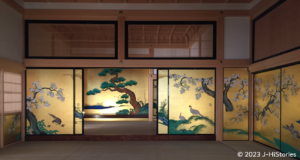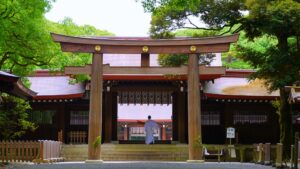The God of War, Kenshin, and the Muromachi Shogunate Revival
Uesugi Kenshin (1530-1578, 上杉謙信) was a fervent believer in the god of war, Bishamonten (毘沙門天), using one of the letters of '毘' as an emblem on his own flag, and fighting under the banner of 'Bi'. During his lifetime, he lost only twice out of 71 battles, making him a true military god. During the Warring States period, when territorial expansion was a matter of common practice, he did not wage war on other territories himself but fought to save those who sought his help as Kanrei (Shogunal Deputy) of the Muromachi Shogunate. In short, he was a chivalrous man.
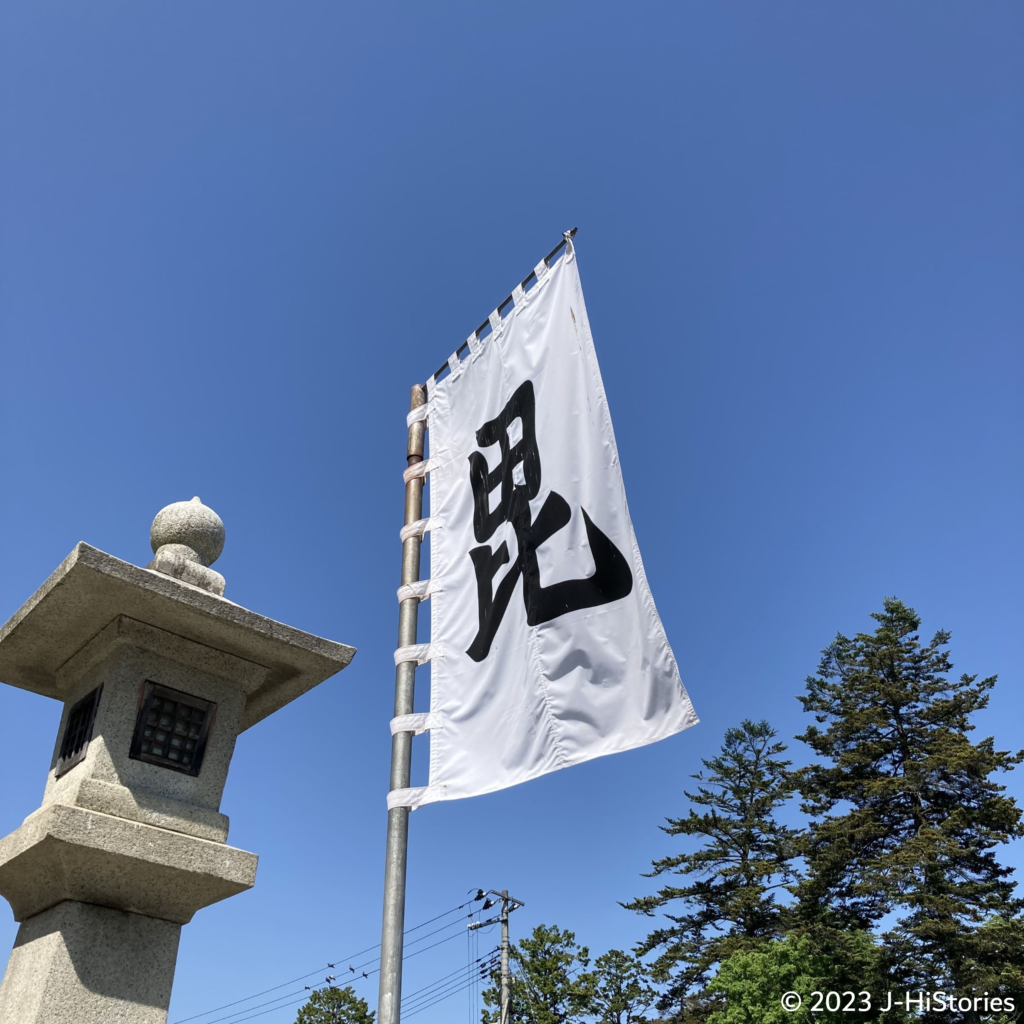
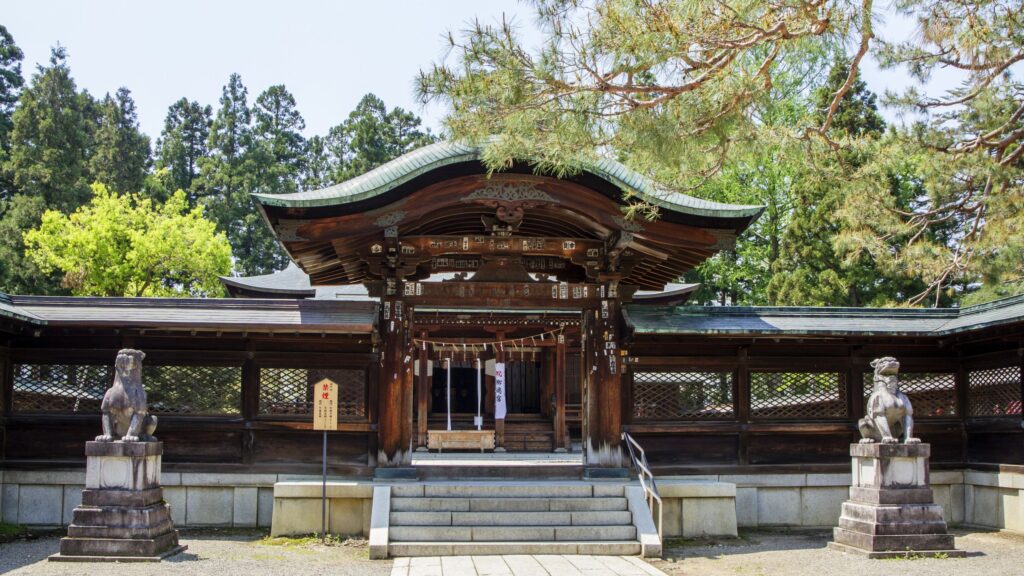
Kenshin’s Pledge: A Turning Point in Yoshiteru's Struggle
During the 11-year Onin War, the Muromachi Shogunate lost its authority and the 13th Shogun, Ashikaga Yoshiteru (1536~1565, 足利義輝), was twice expelled from Kyoto by the Warring Federal Lord, Miyoshi Clan. It was Kenshin who made an appearance in front of Yoshiteru in Kyoto with approximately 5,000 elite soldiers in 1559. Kenshin pledged his loyalty to Yoshiteru, vowing to support him, to express his belief in countering the Miyoshi clan, and to restore the Shogunate’s authority. In response, Yoshiteru welcomed him and granted him special privileges, including the use of a shabrack, a white umbrella cover, and a sedan chair, on par with the treatment accorded to Shogunal deputies. Together with his close friends, the Kanpaku (chief advisor to emperors) Konoe Sakihisa (1536-1612, 近衛前久), and Kenshin, Yoshiteru embarked on the path to revive the Muromachi shogunate. In essence, they aimed to transform the "Warring Feudal Lords," those who sought to overthrow their lords with their military power, into loyal "Lords of the Muromachi Shogunate" under the shogun’s authority. To achieve this goal, Yoshiteru bestowed Kenshin the great honor of defeating formidable warlords who defied the shogun’s orders such as Takeda Shingen (1521-1573, 武田信玄) in Kai(Yamanashi) and Hojo Clan in Kanto.
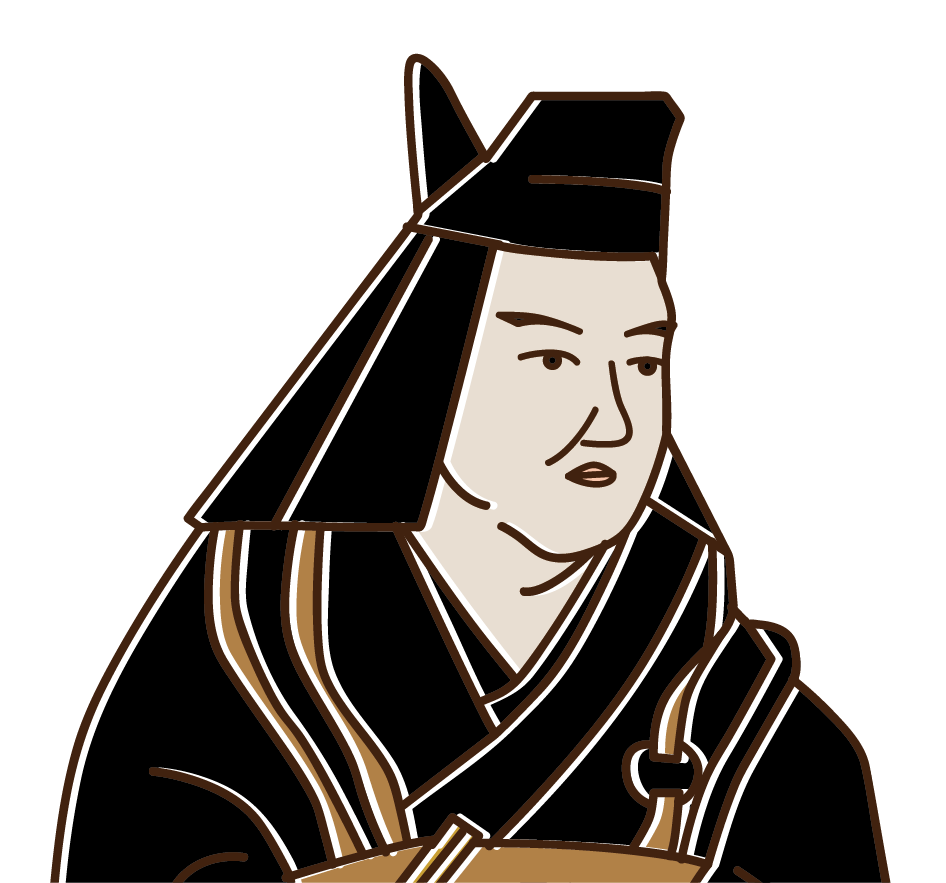
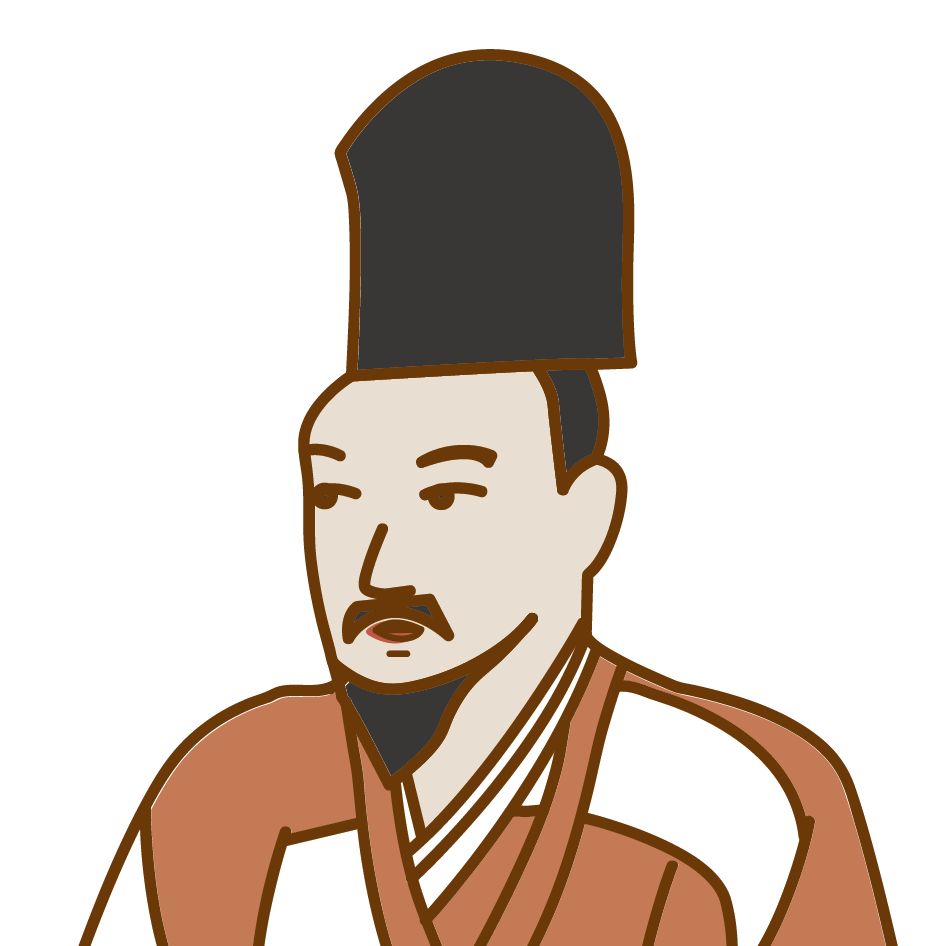
The “God of War” challenged restoring the Muromachi Shogunate

(Source: Nagano Convention & Visitors Bureau)
Kenshin's battles were anything but easy. The series of Kawanakajima battles at the border between Kenshin and Shingen began in 1553, followed by the second in 1555, the third in 1557, and the fourth in October 1561, in which Kenshin fought a single battle fiercely with Shingen. For Kenshin, it was indeed his destiny to confront these warring feudal lords who obstructed Shogun’s aspirations to restore the Muromachi Shogunate. Simultaneously, Kenshin engaged in a series of fights against various other feudal lords, including the Hojo clan. In 1560, a year after Kenshin pledged his allegiance to Yoshiteru, he initiated a campaign against the Hojo clan, which was steadily expanding its dominance in the Kanto region. Kenshin diligently recaptured one castle after another that had fallen into the hands of the Hojo clan. The support of Konoe Sakihisa, who joined Kenshin's army bolstered his efforts. Kenshin led a force of about 8,000 men to conquer the Kanto region against the Hojo clan, which continued to expand its territory. He captured castles in Kanto that had been taken by the Hojo clan at a breakneck pace. The Kanto warlords turned to Kenshin, and with a force of over 110,000 men, they laid siege to the Hojo clan's Odawara Castle. Kenshin demonstrated his authority and prestige as the supreme power of the Muromachi Shogunate and then back to his home castle. Meanwhile, in 1560, a startling news was raced through nationwide. It was a powerful lord in Sunpu, Imagawa Yoshimoto (1519-1560, 今川義元), who was defeated by another lord in Owari, Oda Nobunaga (1534-1582, 織田信長). The environment surrounding Kenshin becomes even more chaotic, tough, and complex.
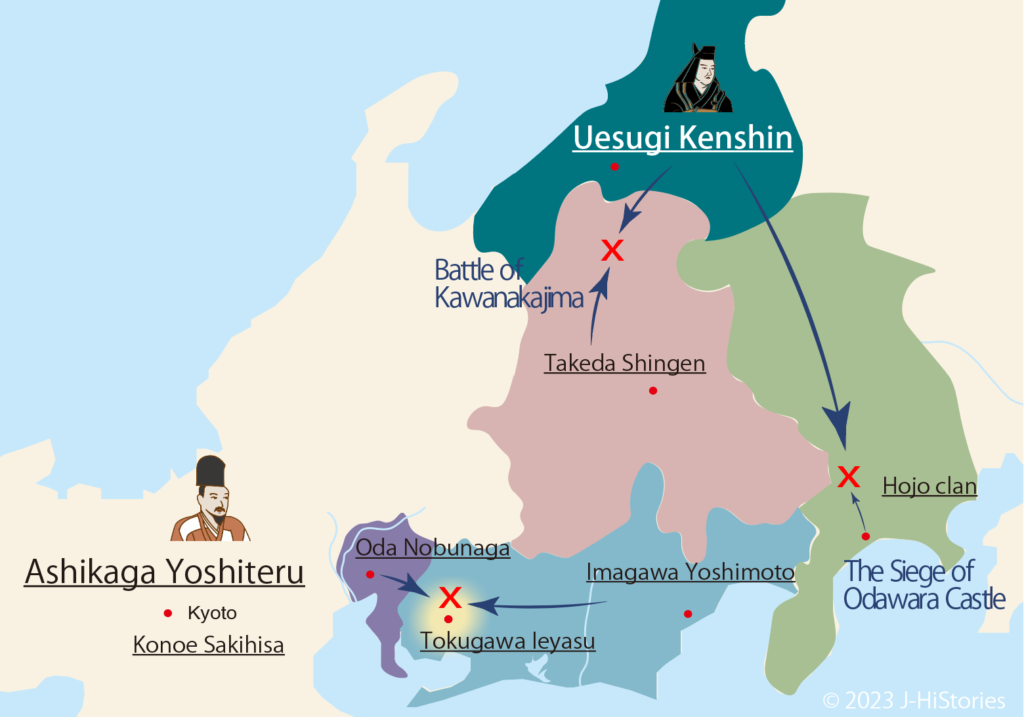
Yoshiteru was killed, Kensin died, and the revive became only a dream
In the absence of Sakihisa, Kyoto was in turmoil due to frequent conflicts between the Miyoshi clan and its opponents. Yoshiteru was whisked away from Kyoto by the Miyoshi clan once again. At that time Kenshin fought against his enemies like the Takeda and Hojo clans in the Kanto region and was unable to go up to Kyoto to rescue Yoshiteru. In the meantime, Kenshin's ally Sakihisa went back to Kyoto on his own accord in violation of the oath of restoring the Muromachi Shogunate with Kenshin, resulting in Kenshin and Sakihisa falling into the insulation. Thus, the ambition of reviving the authority of the Muromachi Shogunate collapsed. The misfortunes continued. The tragic news also reached Kenshin that Yoshiteru was killed by the Miyoshi clan in his residence in Kyoto. Kenshin was spending his days in the battle to fulfill his duties as the Kanto Kanrei to ensure the tranquility of the Kanto region, but he suddenly died of disease in 1578 at the age of 49. Here, the revive of the Muromachi Shogunate became only a dream.
Rakuchu-Rakugai-Zu painting Uesugi version: The Proof of Kenshin’s Pledge to Restore Shogun’s Power and Authority
The Rakuchu-Rakugai-Zu painting- Uesugi version, a national treasure, consists of six-panel folding screens measuring 364cm in length. It offers a stunning bird’s-eye view of Kyoto’s capital and its picturesque surroundings, bathed in golden clouds. This artwork vividly showcases iconic landmarks, including the Imperial Palace and emblematic temples like Kinkakuji, Kiyomizu, Snnjusangendo, and more. The left panels offer a glimpse of the “Hana-no-Gosho,” originally built by the 3rd Shogun, Yoshimitsu, as the residence of the Ashikaga Shoguns. The painting effortlessly captures the vibrant atmosphere, resonating with the era's excitement. Crafted by the legendary painter of the Kano School, Kano Eitoku(1543~1590, 狩野永徳), this masterpiece was commissioned by Yoshiteru. He aimed to immortalize the vibrant zenith of the shogunate by depicting Hana-no-Gosho on the screen, even though it had been consumed by flames during the 11-year-long Onin War. In addition, Yoshiteru portrayed his loyal vassal, Kenshin, en route to Hana-no-Gosho. This scene vividly portrays what Yoshiteru envisioned, featuring a procession with a sedan chair, attended by several followers, heading towards Hana-no-Gosho, followed by a horse adorned with a red shabrack as a symbol of authority. The person in the sedan chair is Kenshin, and Yoshiteru warmly welcomes him in this painting. Despite Yoshiteru’s aspirations to revive the Muromachi Shogunate with Kenshin and establish an orderly and peaceful nation, this dream remained unfulfilled. The demise of the Muromachi Shogunate came in 1573 when Oda Nobunaga expelled the 15th Shogun, Yoshiaki, Yoshiteru’s brother, from Kyoto.
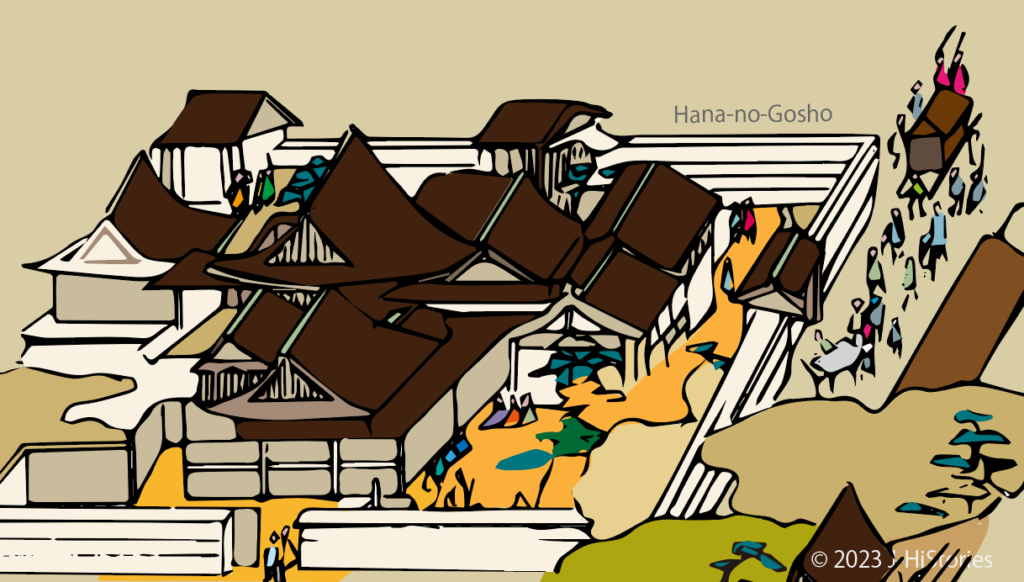
Uesugi Kenshin Timeline
| 1553 | The first the Battle of Kawanakajima | 24 | Muromachi Period |
| 1555 | The second the Battle of Kawanakajima | 26 | |
| 1557 | The third the Battle of Kawanakajima | 28 | |
| 1559 | Kenshin went up to Kyoto and met Shogun Yoshiteru | 30 | |
| 1560 | Nobunaga defeated Imagawa Yoshimoto at the battle of Okehazama | - | |
| 1561 | Konoe Sakihisa joined Kenshin's army | 32 | |
| 1561 | Kenshin conquered various castles in Kanto and fought against Hojo clan at Odawara Castle | 32 | |
| 1561 | The forth the Battle of Kawanakajima | 32 | |
| 1564 | The fifth the Battle of Kawanakajima | 35 | |
| 1568 | Nobunaga went up Kyoto bringing Ashikaga Yoshiaki | - | Azuchi Momoyama |
| 1573 | Muromachi Shogunate ended by the 15th Shogun, Yoshiaki was ousted by Nobunaga | - | |
| 1578 | Kenshin passed away | 49 |
Recommendations to visit
Uesugi Shrine
- Access: 8 minutes from JR Yonezawa Station. Take a bus bound for "Shirabu Onsen (白布温泉)” at West Bus Terminal. Get off at "Uesugijinjya-mae(上杉神社前)" bus stop, then an 8-minute walk.
Yonezawa City Uesugi Museum
- Access: 8 minutes from JR Yonezawa Station. Take a bus bound for "Shirabu Onsen (白布温泉)” at West Bus Terminal. Get off at "Uesugijinjya-mae(上杉神社前)" bus stop, then an 8-minute walk.

